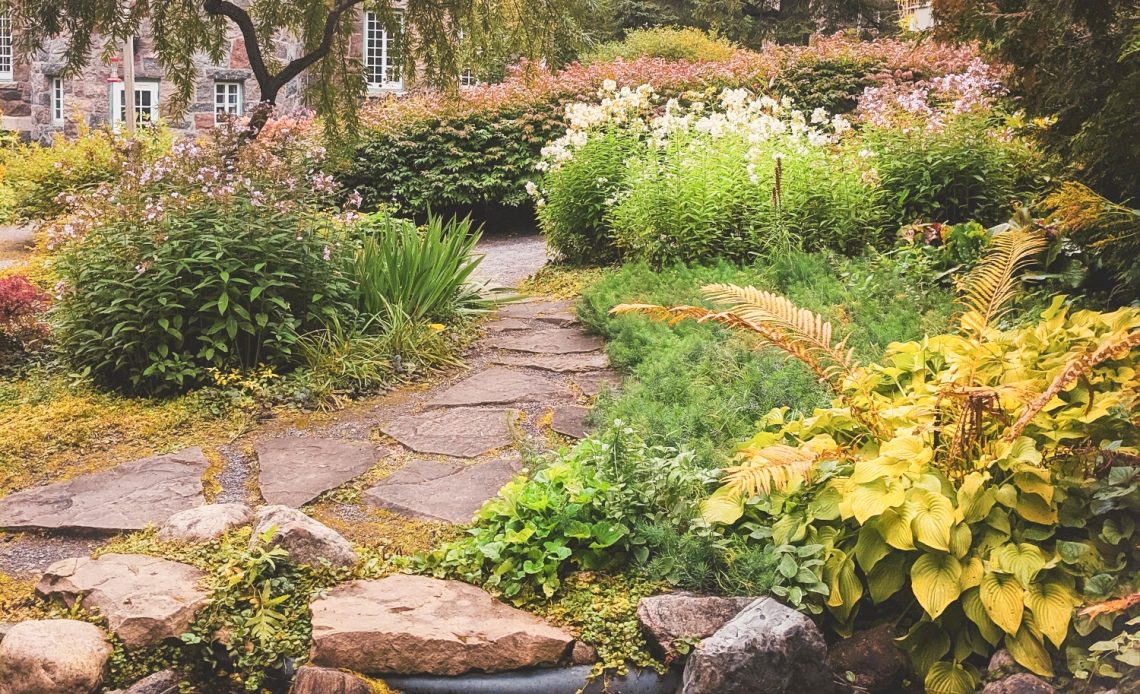

We’re here to help! Wild Yards is a completely free website that is 100% dedicated to helping you create a wildlife-friendly, sustainable yard. Read more
WildYards is reader-supported. When you buy a product through a link on our site, we may earn a comission. Every product is independently selected by our (obsessive) editors and our reviews are unbiased and objective. Read more about our mission or our privacy policy.
Did you know that there’s a tree that can produce 40 different types of fruit? The advancements in modern horticulture are astounding! And yet, it seems the one thing they still can’t make grow on trees is money. As a homeowner, you know how much of a challenge it can be to landscape a sloped yard, and when money is an issue, the prospect becomes even more complicated. So today, we’ve compiled a list of sloped front yard ideas on a budget, to help get those creative juices flowing.
Using stones, bricks, and pavers to create levels in your sloped front yard allows you to landscape while also preventing erosion. And staggering plants, going from shortest to tallest up the slope, adds interest to your home’s surroundings.
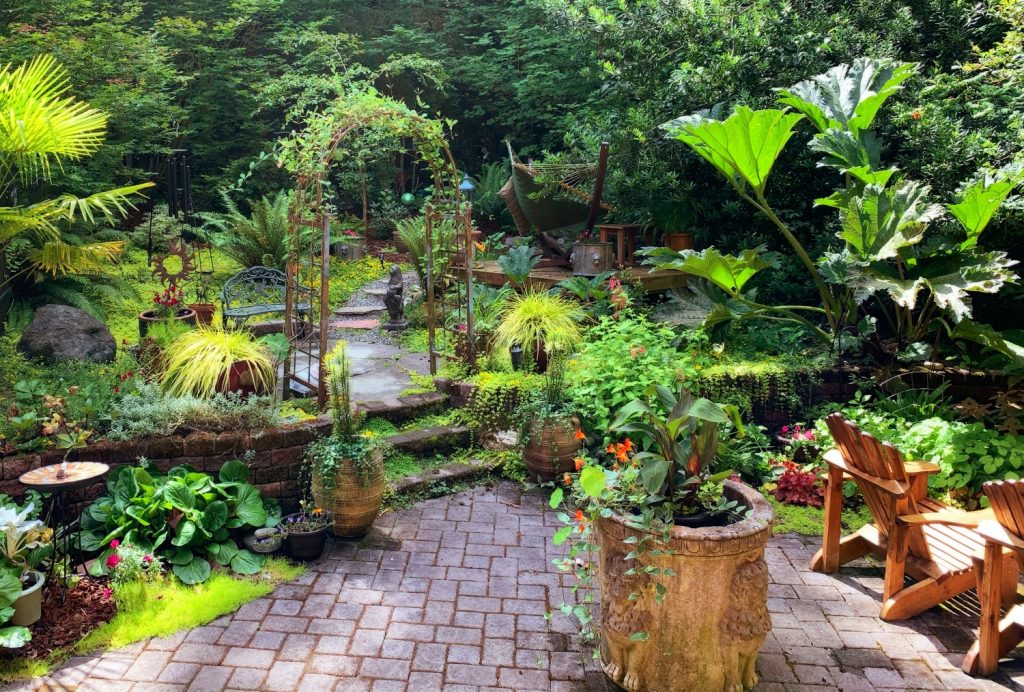
13 Best Sloped Front Yard Ideas On A Budget
When your front yard is on an incline, particularly a steep one, that makes planting and tending to your flowers difficult. Sloped areas are bound to see water runoff, which varies greatly depending on soil type. They also see erosion over time, and these factors work against you when it comes to dressing up your yard.
If your front yard is super sloped, you’ll need to focus on a few things when it comes to landscaping. The first is choosing suitable plants. Usually, yards that have a steep incline don’t retain much moisture, so selecting ornamentals with lower water needs can be helpful. And because hills lose soil over time, planting shrubs and trees with extensive root systems can help keep things in place.
Working with the slope, rather than against it, is almost always your best bet. Keeping these key points in mind will give you the most success when it comes to designing a landscaping plant for your sloped yard.
Use stones to create a terrace
One of the best ways to landscape a sloped front yard is to turn it into a terrace. Use large stones, like limestone, slate, or even bricks, to build retention walls spaced at regular intervals going up the slope, much like a staircase. This slows the runoff rate, allowing rainwater to penetrate the soil. It also helps prevent erosion, and if the slope in your front yard is close to your home’s foundation, that’s of the utmost importance.
Flattening the slope in sections also makes it easier to plant. Fill the staggered terraces with low-growing plants, like lavender, rosemary, and salvias for a modern Mediterranean look. Or choose Little Lime hydrangeas for lower levels, while planting taller flowers, like dahlias, higher up.
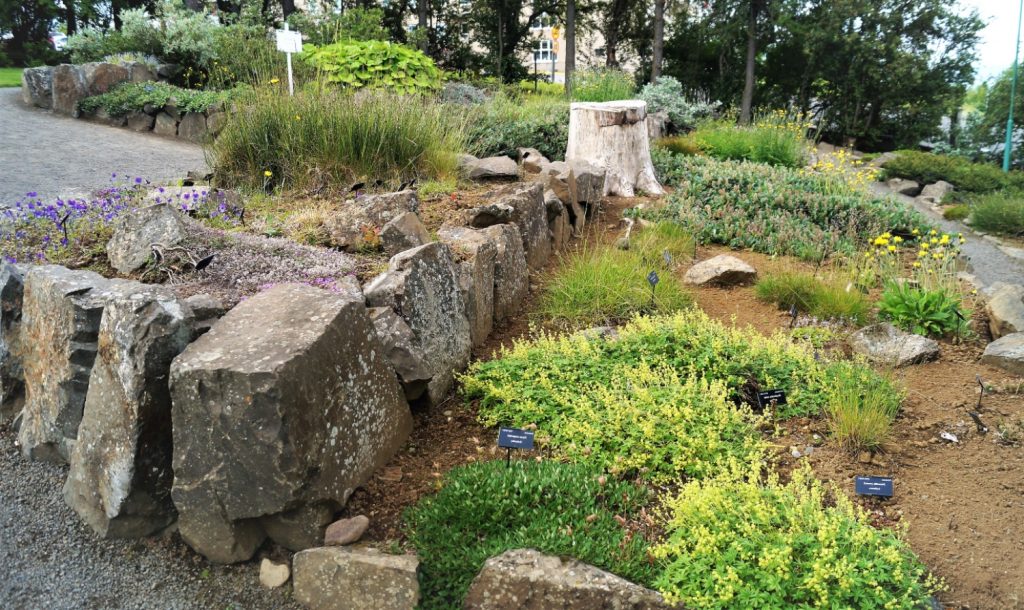
Make a walking path lined with wildflowers
One of the major problems with a sloped front yard is mowing. Using a riding mower on a steep incline is a good way to get seriously hurt. But trying to wheel a push mower across a steep hill, even if you mow horizontally rather than vertically, is a challenge, to say the least. Save yourself some trouble by planting wildflowers instead.
Use stones to create a walking path from your front door to your driveway and to the street, if desired. Then, simply scatter wildflower seeds and let them take over. Your local pollinators will love you, you won’t have to bother with mowing anymore, and your yard will look spectacular, too.
Of all of the ways to landscape a sloped yard, this is one of the least expensive, and one of the easiest to maintain. Native flowers don’t require much care. They’re naturally suited to your region, so you won’t have to fuss over them, as you might have to do with ornamental plants.
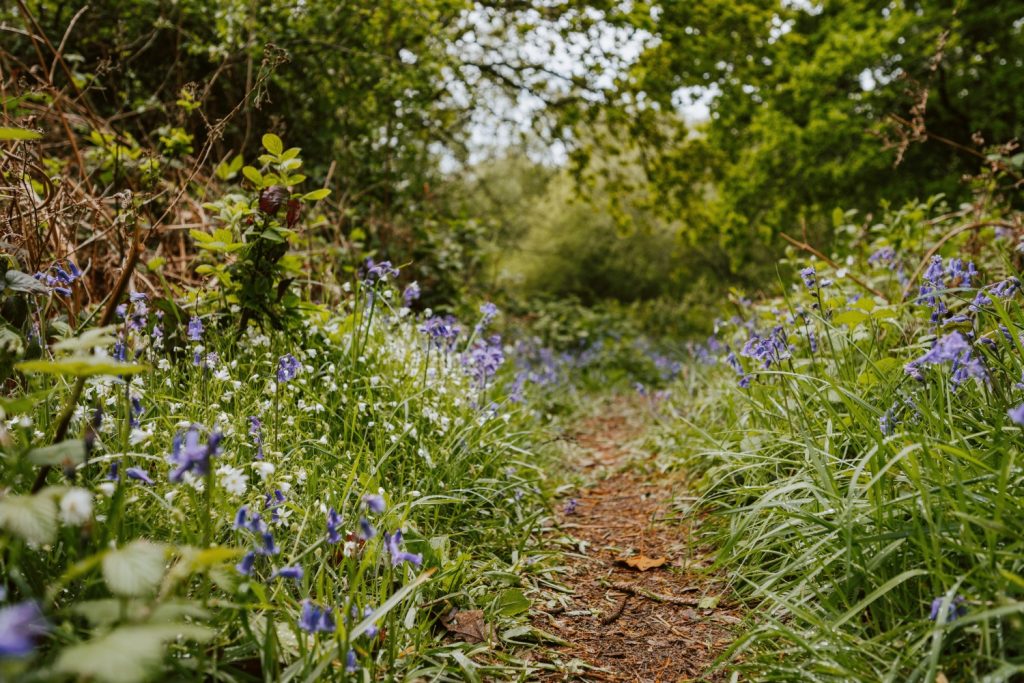
Plant Irish moss
In a similar vein to the previous idea, you can also cover your yard with Irish moss, which only reaches a maximum height of 2 inches and never requires mowing. Irish moss grows best in partial to full shade when planted in moist soils, so it isn’t ideal for every yard. But it will give your sloped front yard the lush green appearance of a freshly sod lawn, only without all the work.
If your yard is too sunny for Irish moss, you’ll need to find an alternative. Carpet sedum and creeping phlox are excellent alternatives. Both of these ground covers thrive in full sun, and they’re low-maintenance to boot. They’ll give your yard some color while helping to prevent erosion.

Lay out pallets to create easy flower beds
When it comes to making flower beds, what could be easier than laying a pallet on the ground? Take a few pallets, flip them over so the boards face the ground, fill them with soil, and you’re ready to start landscaping! Arrange your pallets to create rows of flowers across your lawn, or scatter them here and there to make accent flower beds. Pallet flower beds are ideal for small flowering plants, like zinnias, marigolds, and even some herbs, including basil and mint.
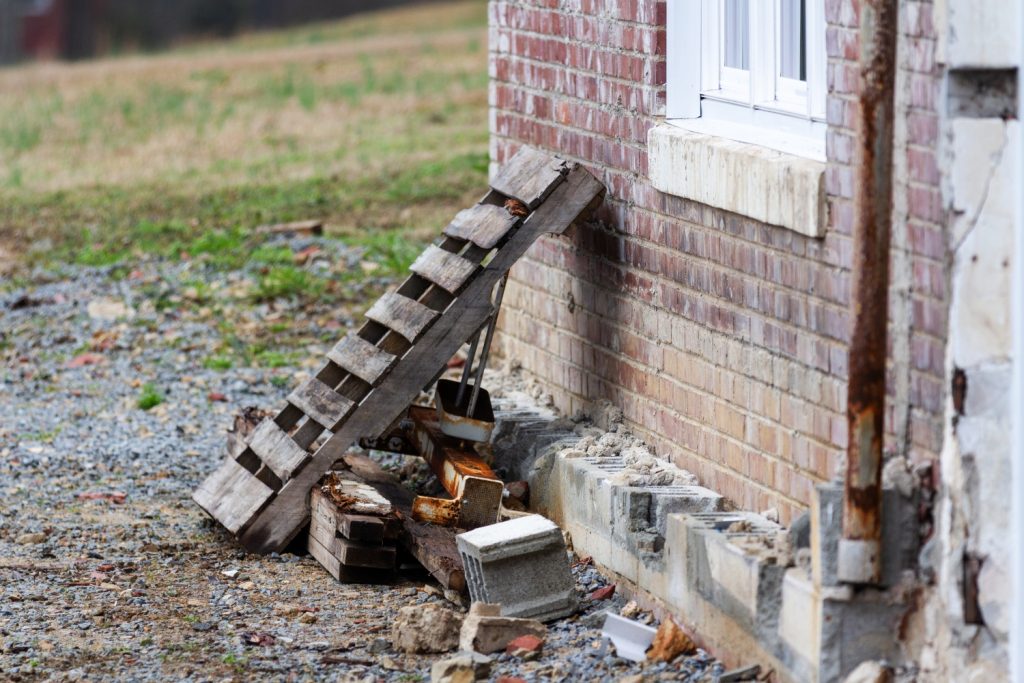
Use rocks to make a free-form flower bed
Instead of using rocks to create a terrace, use stones to outline the perimeter of the slope in your front yard, fill the area with topsoil (amended with compost or gardening soil to make it more fertile if necessary), then create a free-form flower bed.
When landscaping a slope, you want to keep low-growing plants at the bottom of the hill and taller ones at the top. This helps draw the eye from the base of the incline up to your home. Keep flowers and shrubs at the lowest point and ornamental grasses and hedges near the top. And don’t forget to use trees, like Japanese maples and red twig dogwoods to jazz up the middle of the bed.
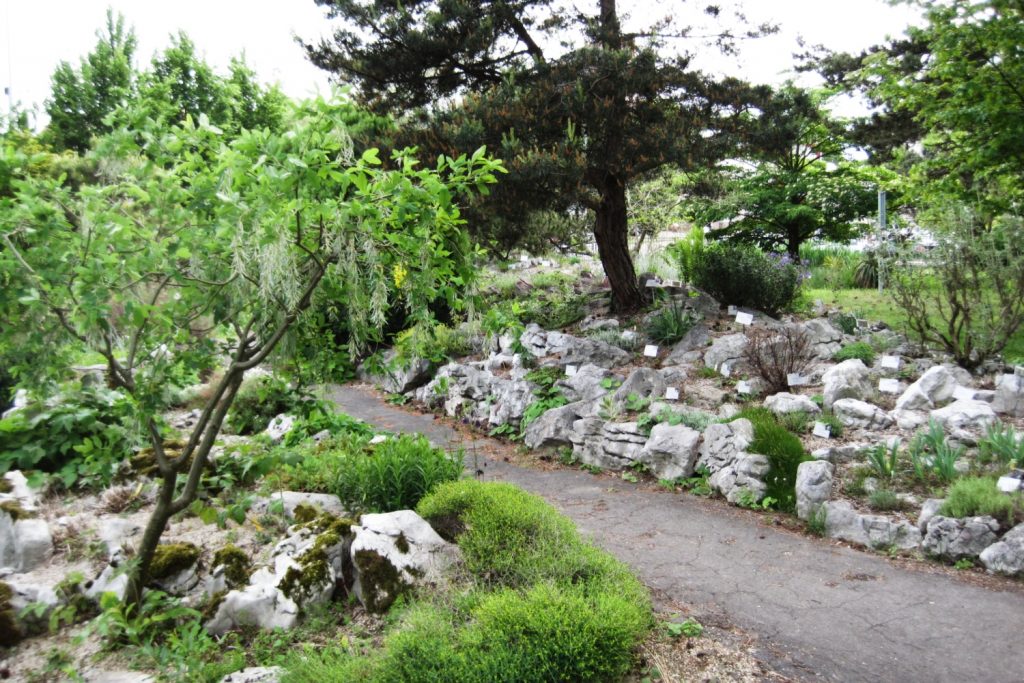
Construct a water feature
Water features can be pricey, but you don’t have to shell out a ton of money to construct your own retention pond. If you have enough room in your yard beyond the slope, use an excavator to dig a small pond at the base of it. Stagger rocks and stones to create a waterfall leading to the pond below. You can dress up the surrounding area with ornamental grasses and flowers.
Water features are also a fantastic way to attract more wildlife to your backyard. Songbirds, owls, deer, squirrels, and other animals are in constant need of a reliable water source. If you love observing the local flora and fauna, then make that hill in your front yard work to your advantage.
Landscape with gravel and cactus
Live in an arid climate? No worries. You can still dress up your sloped front yard by pouring gravel (or sand) and planting native cacti. Use stones, bricks, landscape timbers, or any other material you’d like to create a terrace along the hillside. Then, plant your favorite dry-climate plants. Prickly pear cactus, agave, aloe vera, purslane, and California peonies work well in these sorts of beds.
You can also decorate these beds with petrified wood and other rocks and minerals that tickle your fancy. Lining your sloped front yard with rocks catches water running off, helping to trap it in the soil, while at the same time working to prevent erosion.
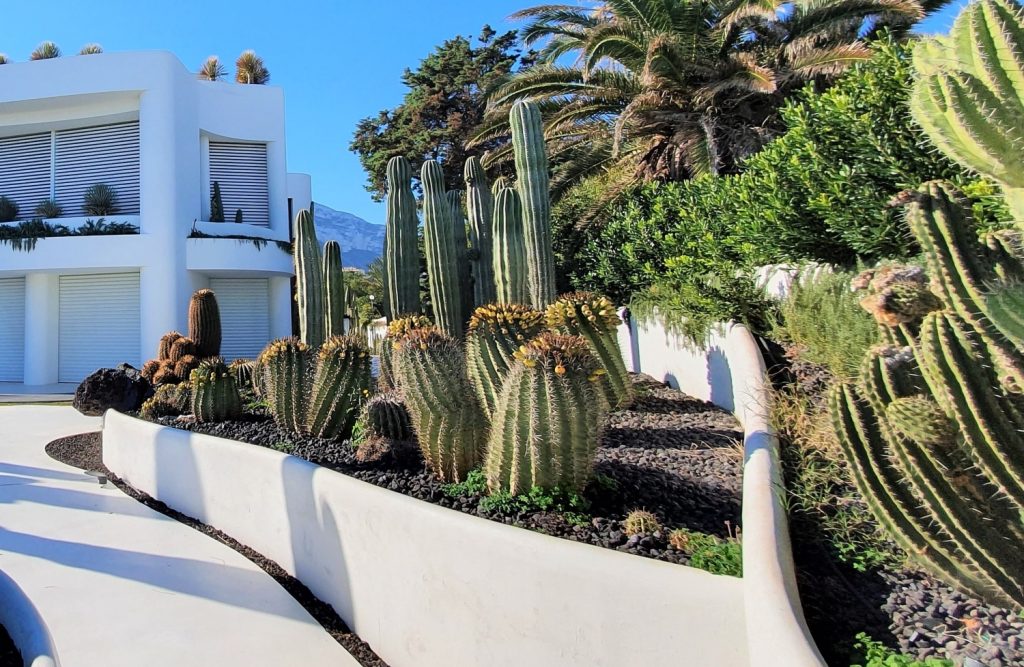
Arrange rocks around trees
Using rocks to create flower beds around trees is nothing new. But this landscaping technique is so versatile that it can be used to dress up sloped front yards, too. Make a simple O-shaped outline around your shade trees, being sure to give the tree’s roots enough room to breathe. Or, make an S-shaped flower bed to add interest to the landscape and cover more ground.
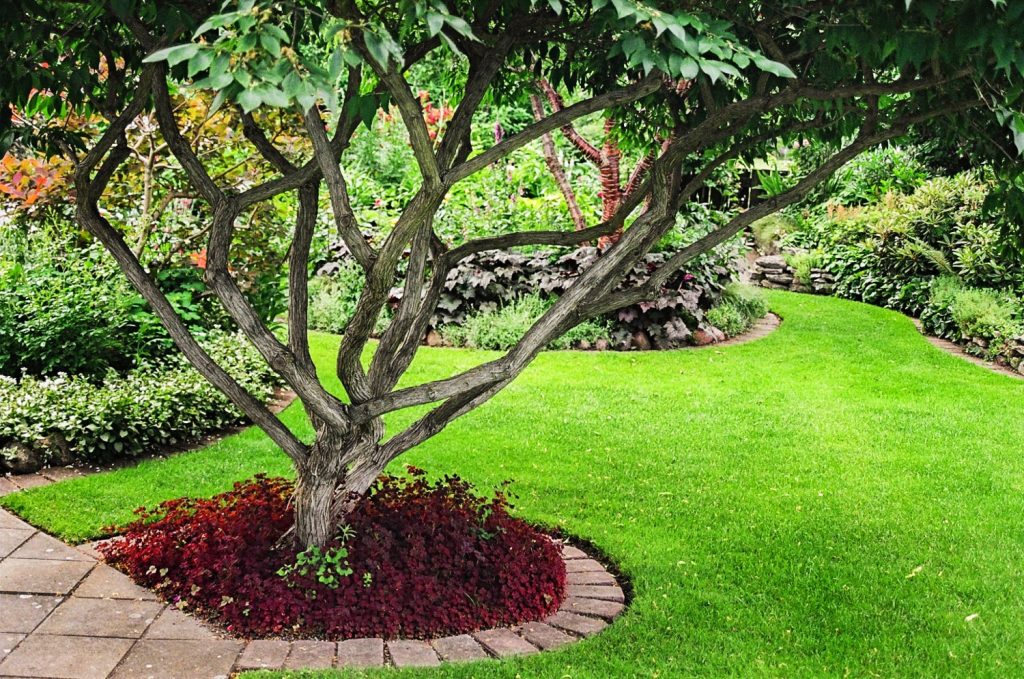
Build a retaining wall
You don’t have to have a dump truck full of stones to build a retention wall. Just use chicken wire and stakes to create a border around the slope, then fill it up with smaller rocks. Easy peasy! Retention walls don’t require much work. They help break up the space on the slope into several sections, making each section easier to tend to. A retention wall works much like a terrace, but the lines can be more free-form, whereas most terraced slopes are very linear.
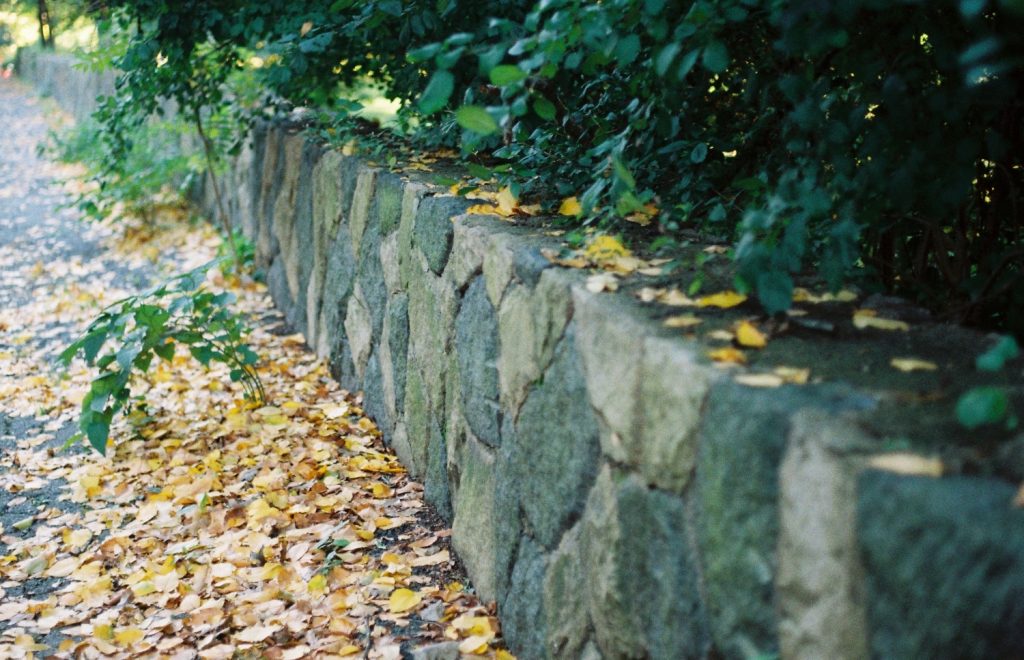
Extend your deck or porch
Taking your front porch or deck out a few feet helps cover more ground. In some cases, homeowners can “level” their yards just by covering the bulk of the slope with decking. Plus, a huge outdoor space is bound to up your property value, and that’s always a good thing.
Now, granted, this is not the cheapest solution to a sloped front yard. This may cost you a pretty penny upfront. But, in the long run, you end up saving a ton because you don’t have to pay for gas to mow, you don’t have to pay for fertilizer to feed the plants in your landscaping, and you don’t have to pay for the extra water it would take to keep said plants hydrated.
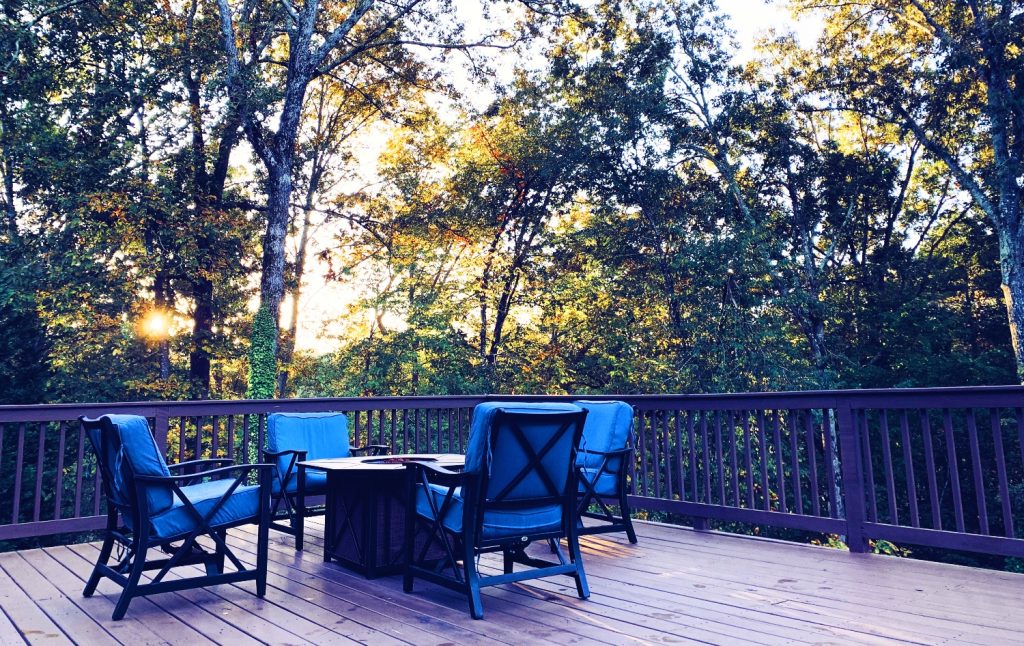
Make a giant vegetable garden
If efficiency is your middle name, then maximize your sloped front yard by planting a vegetable garden. First, use landscape timbers, railroad ties, or any other wooden material to terrace the yard. You’ll need somewhat level beds for your veggies to grow best. Next, plan out your garden. Be sure to space your plants far enough apart that you’ll be able to weed the beds and harvest produce without any issues.
For sunny yards, plant things like sunflowers, watermelons, tomatoes, peppers, and sage. For shadier locations, choose broccoli, cauliflower, endive, lettuce, arugula, and mint. Once your garden has been planted, consider installing a fence around the perimeter of the sloped beds to keep rabbits and deer out of your crops.
Create a natural assemblage
Maybe manicured isn’t the look you’re going for, maybe you’re looking for something rugged and raw instead. If you want your sloped lawn to look au naturale, use large rocks to accent the landscape, and plant a variety of unpretentious greenery to keep things interesting.
Elephant ears, blue fescue, and even peace lilies can be used to add texture to a wild yard. Use a ground cover, gravel, or a thick layer of mulch to fill in between plants and keep things looking laid-back. Covering the ground in between your plants will help the soil retain moisture, which means you can spend less time watering.
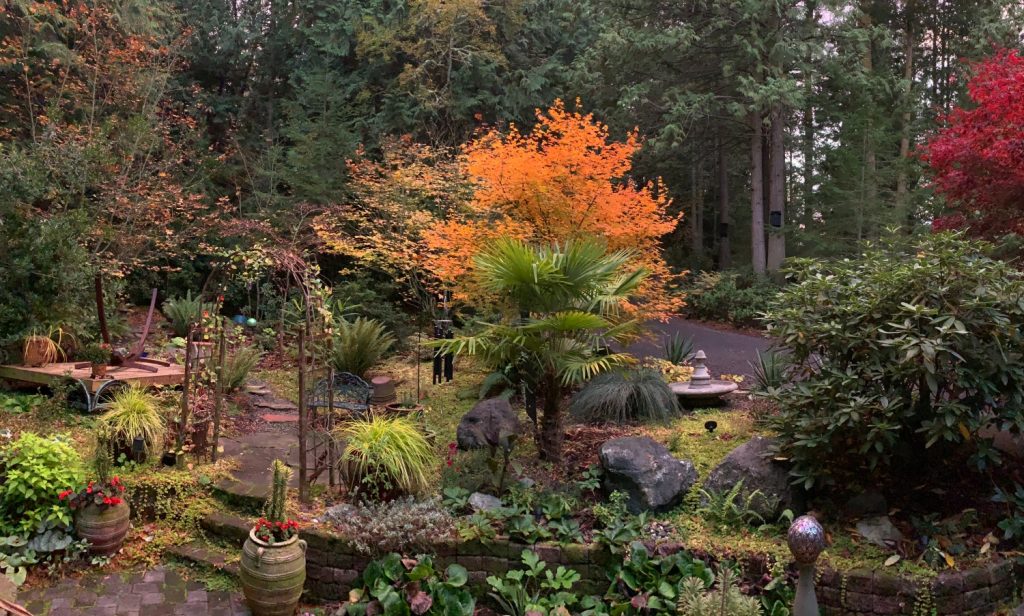
Train vines to cover the slope
Vines usually climb, but in the absence of anything to latch onto, many of them act as a ground cover. If you want your sloped front yard to be covered in beautiful flowers, consider planting a fast-growing climbing plant to blanket the area.
Trumpet vine, passionflower, and morning glory grow well up a steep surface, and, more importantly, they grow quickly. Another added benefit is that they’re very popular with bees, butterflies, and hummingbirds, all of the beautiful creatures we wildlife enthusiasts love to observe.

Can you level out a sloped front yard?
If your front yard has a steep slope, so much so that it makes walking, mowing, and other basic activities almost impossible, then you may be able to level it out a bit with topsoil. Creating a slope that’s more gradual makes landscaping easier. Unfortunately, this isn’t always an option. If your yard slopes down to a structure or roadway, adding more dirt may not be an option.
In some cases, the size of the lot the house sits on would require significant excavation around the house in order to level the yard out to the street. And removing huge quantities of dirt from around your home’s foundation is just asking for trouble in the future. On the other hand, if your home sits at the bottom of the slope, then building up around it could lead to significant flooding in the future, which is another problem you don’t want to have.
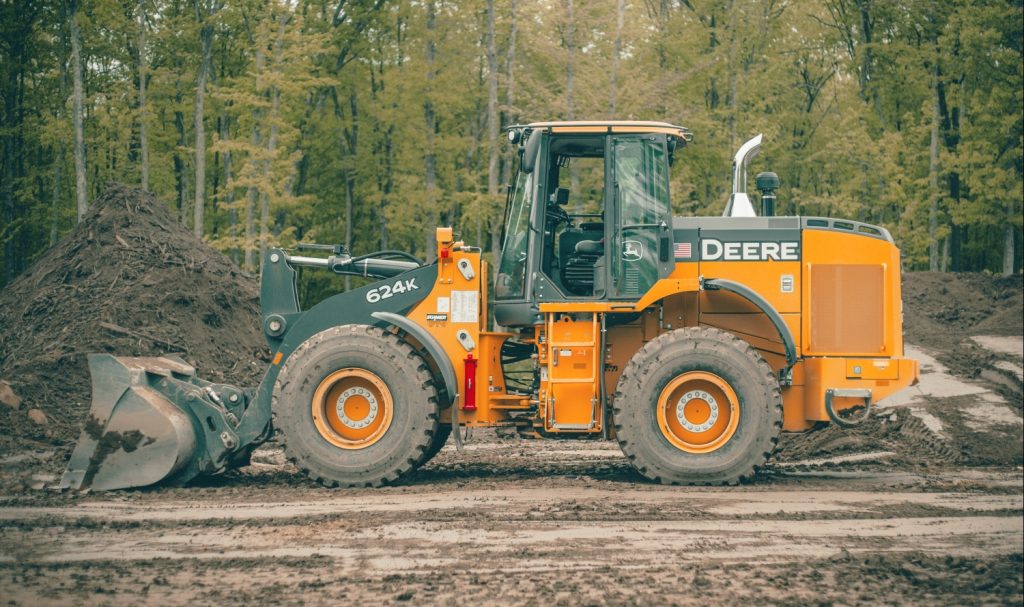
Do you have to landscape a sloped yard?
Because of the potential pitfalls of a sloped lawn, we highly recommend landscaping your hilly yard. Erosion poses such a threat to a home situated at the top of a steep slope, and landscaping (even on a budget) helps to mitigate the effects of this natural phenomenon. Landscaping your sloped lawn improves drainage, water runoff, and soil displacement, making the land your home sits on more stable for the structure itself, and for the people inside it.
